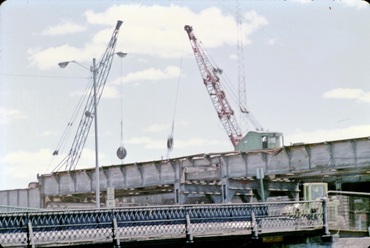|
J. William T. "Bill" Youngs, The Fair and the Falls: Spokane’s Expo ’74: Transforming an American Environment, Chapter Fifteen
|
"Spokane Expo '74 Concept Map" courtesy of the Washington State Archives
|
Chapter Fifteen: Marketing, Money, and Management
|
SummaryAttracting exhibitors and visitors to the fair proved to be a continual challenge. Expo's Public Relations and Advertising Department got off to a rocky start -- press coverage was rare and frequently inaccurate. Funding for the fair also continued to be a major concern. In addition to these troubles, the Expo staff faced a leadership crisis which led to a shakeup of the management team.
|
Author reads from the Text
"The littlest show on earth"
"In December 1973, [Jane] Johnson announced that 142 magazines were planning articles on Expo. Even though the media began to pay attention to Expo, however, some of the news was discouraging. Many reporters had trouble believing that a small city like Spokane could possibly hold a world's fair, and in their confusion several ran headlines about the 'Seattle' fair. One paper added insult to injury by headlining the 'Tacoma' fair -- despite the fact that Tacoma was actually smaller than Spokane. Another paper published an article in 1972 indicating that the fair was already in progress. Many reporters used Spokane's size as excuse for ridiculing Expo. One journalist called it 'the littlest show on earth.'"
"You've got to call it off"
"Board meetings that King Cole described as being 'electric with stress and tension' were most often made so by financial problems. The major backers of the fair knew that failure was a possibility. Sometimes it even seemed a reality. One evening at the Empire Club one of the backers 'was in his cups a little bit' and revealed to Cole his fears: 'He came up to me, and the fair was maybe six months from opening. He had tears in his eyes. He said, 'King, you've got to call this off, you're gonna bankrupt the town. You've got to call it off.'"
"A pure and simple management problem"
"Critizer described his assessment of the Expo staff in 1973: 'I spent about two weeks around Expo, talking to people, looking at things. And I found that -- to make a long story short -- that it was a pure and simple management problem: there wasn't any. And the reason there wasn't any: who in the hell in Spokane knew how to run a world's fair? It didn't mean that the people who were trying weren't trying, but it was kind of like asking me to play the violin: I'd love to, but I don't know how!'"

